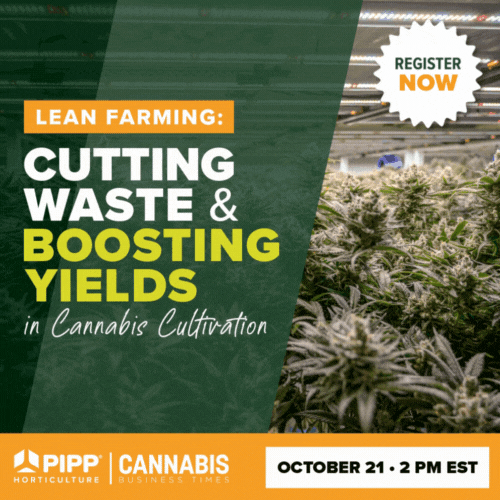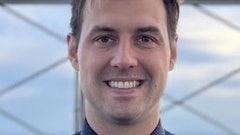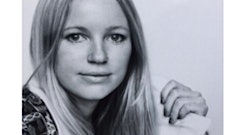
Beija Flor’s co-founder and head cultivator Jonathan Wentzel didn’t jump into cannabis cultivation on a whim. No, the Napa Valley native was born into the fifth generation of an agriculture family and was practically fluent in cannabis by the time he officially opened Beija Flor Farms (a roughly 1.5-acre outdoor grow in Mendocino, Calif.) in 2015. He cultivated his first cannabis plant years earlier, at the age of 13, with help from his southern Humboldt-based uncle.
Working in the fields and being around agriculture for most of his life has allowed Wentzel to form a strong connection with the land he farms, and he does everything within his power to protect it.
Here, Cannabis Business Times Senior Editor Scott Guthrie speaks with Wentzel about how his agriculture background has helped him with cannabis cultivation, why he prefers to make his own soil, his approach to outdoor pest management, the reasons behind Beija Flor’s decision to become a legal, licensed California grow and why he concentrates so much on terpene expression.
Scott Guthrie: Before transitioning to cannabis, you worked in the wine and vineyard industry. What did you do in that industry, and what takeaways have helped you the most with cannabis cultivation?
Jonathan Wentzel: That’s my family’s business, and we’ve been growing grapes since the ’80s. I think in general what it gave me is a respect for terroir and an innate trust in the soil. By terroir, I mean the culture and climate in which you plant. So, the topography that dictates what grows best is how we adapt to our terroir, and the same [applies to] cannabis varieties. That’s my takeaway from learning about the vineyards and how advanced they are, and how much [vintners] pride themselves on their sense of place and microclimate.
Guthrie: You create growing programs specifically for microclimates and elevation. What does that mean, and how do you do that?
Wentzel: As much as we can, we look at topography on a map. For example, a certain strain would grow in the mountains, and in the same topography it would grow here. Like Afghani, ... Afghani would grow in the mountains … and there will also be a variety that will grow in the valleys. Knowing the distinctive characteristics between those two cultivars can give you a real leg-up on your cultivation protocol because you can put things at a certain elevation. And using that knowledge, I’m excited to see the future of the industry and more people putting that kind of knowledge to work and really creating a terroir system where we’re able to isolate some of these cultivars and see what conditions they breed and grow best in.
Guthrie: What is Beija Flor’s ethos when it comes to cannabis cultivation?
Wentzel: My personal ethos is to put my heart and soul into it, but largely as a company we’re about sustainability, and [we have] a deep sense of place and ecology in our work, observing nature’s cycles and being a craft cannabis farm. So, linking those concepts: terroir [and] the history. Also [the name Beija Flor] has a history to it; [it] means ‘kiss the flower.’ It’s a property in Mendocino County that’s kind of well-known amongst people in the community.
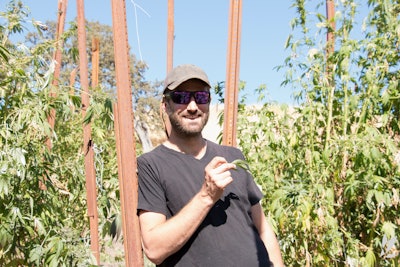
Guthrie: 'Craft breeding' or 'craft breeder' are buzz terms in the industry. More cultivators and companies are jumping into that space. How does Beija Flor stand out and compete in this competitive market segment?
Wentzel: I think it’s great that more people are getting into that space. I highly encourage it, and I think that it’s a real boon for the whole industry, that it can create new varieties and cultivars. I also stress the importance of keeping a beginner’s mind with it and not getting too carried away. There’s a lot to learn, and I think that it’s a lifelong process, so I’m somewhat skeptical of a lot of these companies that have jumped into the space.
And I have found that the plant … wants to be bred, and it’s a really cool pastime. It’s a great way to develop and learn about the plant, too, and gather its characteristics. I’m not sure exactly how we will stand out. I’m not really trying to stand out; I’m just doing something that I’ve done for many years now and hope to continue doing it.
Guthrie: How have you seen cannabis agriculture and soil evolve over time?
Wentzel: I’m putting together many different diverse groups of manures. I’m doing things like gathering seaweed locally, tilling it into soil, and I’m depending largely on the synergy of getting the biology working. When I do that, I’m stepping back and letting that process take over. So, it’s a biologically intensive method, or as you call it, biointensive. … I … want the natural edge that using materials from a 50-mile radius or an 80-mile radius can give me. I find it much more interesting and kind of challenging in a really cool way.
Guthrie: What is your biggest challenge when developing your own soil and going through the process that you just described?
Wentzel: One of the biggest challenges, I think, is using soil as sort of a pest-management protocol. … So, I’m not getting any pest attacks on the [plants] that are in the ground; biological activity in the ground is keeping them healthy. It’s really quite phenomenal.
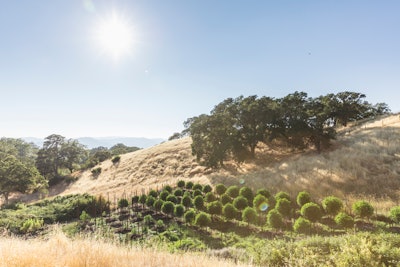
Guthrie: Diving deeper into that: What is Beija Flor’s approach to pest management?
Wentzel: The first line of defense is obviously a good soil, a deep, rich, organic soil that has a lot of things that could homeopathically combat stressors. The plant is so resilient.
The second thing I’m interested in right now is predatory mites, predatory nematodes … ladybugs, biological controls.
The third thing lately is people using and changing the pH [level] of the water [they use] to spray their leaves. That’s something that’s interesting to me that I don’t put into practice, but I’ve heard of people having some success with that.
And the fourth thing is probably if I’m doing new soil and I’m building soil, [and if] I’m not 100-percent confident in it yet because the biology hasn’t taken off, the very last thing I’ll do is make sure that I can at least get in there with a tractor. I connect a big tool behind the tractor that will evenly spray the plants with different organic compounds to help with pest management.
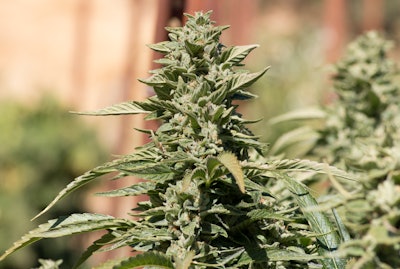
Guthrie: Beija Flor is big on carbon sequestration. What is that, and how can it benefit the Earth?
Wentzel: There’s an optimal amount of carbon on Earth in the atmosphere. We’re made of carbon. There’s carbon released in the air. And when we till up too much top soil, or [release] carbon emissions through burning of fossil fuels, for example, we obviously end up with a situation that is less than pleasurable for a lot of the species on Earth. So, without getting into that too much, the soil absorbs carbon, and we’re able to do that by growing plants. And the more carbon you can put into the soil, the more it can take.
It’s kind of interesting that terpenes are actually made out of carbon. [Terpenes are] actually chains of carbon compounds, so this plant is actually really rich in its potential to absorb carbon. And one of the methods that I stress is no-till agriculture, or ‘till not to till,’ which means, essentially, once you have your biology and everything on point, you do not want to disturb that soil. You’re able to use [the soil] year after year, and it only becomes richer and better and stronger, and it absorbs more carbon and you are disturbing it less. … And some of the [terpene] profiles, we have gotten them really quite high, especially like 4-percent terpenes. So, I think there’s something to that.
Guthrie: What are some techniques you use to bring out terpene expression, and why does Beija Flor focus so much on terpene expression?
Wentzel: I’ve found that through [bringing carbon into the soil], this rich organic matter really benefits the expression of terpenes. I find that it’s stronger in the organic matter-based medium than maybe another medium. ... Another thing is really taking your time with the plant and letting it fully express itself. It has a period of time at the end when it just wants to go and really show its flower and show its essence, if you will.

Guthrie: Beija Flor recently made the decision to become legal. Why, and what has the process been like?
Wentzel: We moved forward just because we want to be transparent and proud of what we do, proud of the medicine we create, proud of putting our heart and soul into this. We want recognition for that. We want to be able to offer good medicine for people, and the best way to do that I think is to really just be legal.
It’s been somewhat of a struggle, and [there’s been] a discrepancy between the state and the local agencies. So, like any new industry, it’s finding its roots and it’s taking a while for these governing bodies to communicate. You have to be patient with that because it’s a new industry. … But I think in general, we’re just in it for the long haul, so we were anticipating this anyway. We expect the market to stabilize and the demand to increase, and these lumps will smooth out over time.

